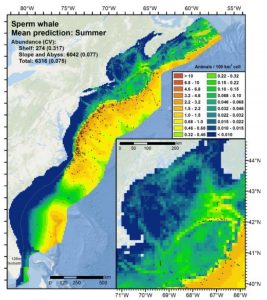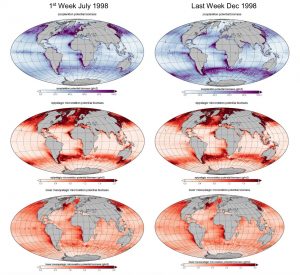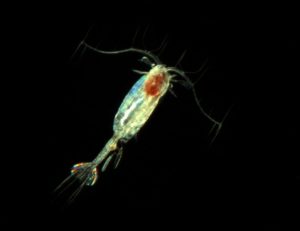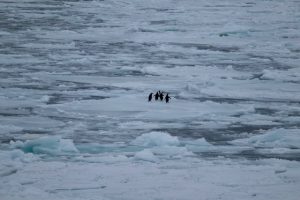MARINE ECOSYSTEM LOW TO MID TROPHIC LEVELS
PI and organization: P. Lehodey (CLS)
Co-Is: I. Senina, O. Titaud, P. Gaspar, B. Calmettes, M. Lalire (all CLS)
Abstract: In previous CMEMS project GREENUP, micronekton functional groups modeled from ocean colour, currents and temperature have been shown useful promising products for marine resources and ocean ecosystem management. The mesozooplankton that has critical importance for nutrient cycles and fish recruitment mechanisms has been added. Here, several enhancements in the modeling and production of these Lower and Mid-Trophic Levels (LMTL) functional groups are proposed. An extension of the model domain towards higher latitudes (> 65°) and shelf seas will increase the coverage of key European maritime regions. This task requires continuous testing of existing and new forcing variables with regional modeling approach and higher resolutions. Model calibration and validation will benefit of additional datasets and improvement to assimilate bio-acoustic data converted into biomass, following a definition of eco-regions with homogeneous characteristics. Finally, a demonstration of pre-operational products is proposed for LMTL products and one application based on them and CMEMS physical variables. It will provide indicator maps of risk of by-catch to assist in the conservation of one endangered marine turtle species. Reference simulations will be diffused to a diversity of users. Their feedback and sensitivity of LMTL to physical and biogeochemical CMEMS forcing fields will be analysed for future upgrades.
Project highlight at mid-term:
LMTL product: 1 functional group of zooplankton and 6 functional groups of epi- and mesopelagic micronekton are simulated (1998-2016) using temperature and horizontal velocity from GLORYS2v4 (free run) reanalysis and primary production derived from GLOBCOLOUR chlorophyll_a, the photosynthetically Active Radiation PAR from ECMWF ERA-INTERIM and satellite SST (OSTIA).
 Density surface model of sperm whale using LMTL covariates (Kindly from Jason Roberts, Duke University, USA).
Density surface model of sperm whale using LMTL covariates (Kindly from Jason Roberts, Duke University, USA).
Under the US Marine Mammal Protection Act, US Navy had to develop a process to prevent injury or disturbance of marine mammals before any testing /training activity. This framework includes a Species density database that is updated every 5 years.
The introduction of LMTL new explanatory variables to produce species density maps yielded better fitting density models than previous ones using lower-trophic covariates (chlorophyll, NPP) for 4 of 5 deep-divers groups or species tested (beaked whales, sperm whale, dwarf and pygmy sperm whales, pilot whales, and striped dolphin). Consistently, the statistical models for deeper divers selected deeper SEAPODYM layers.



